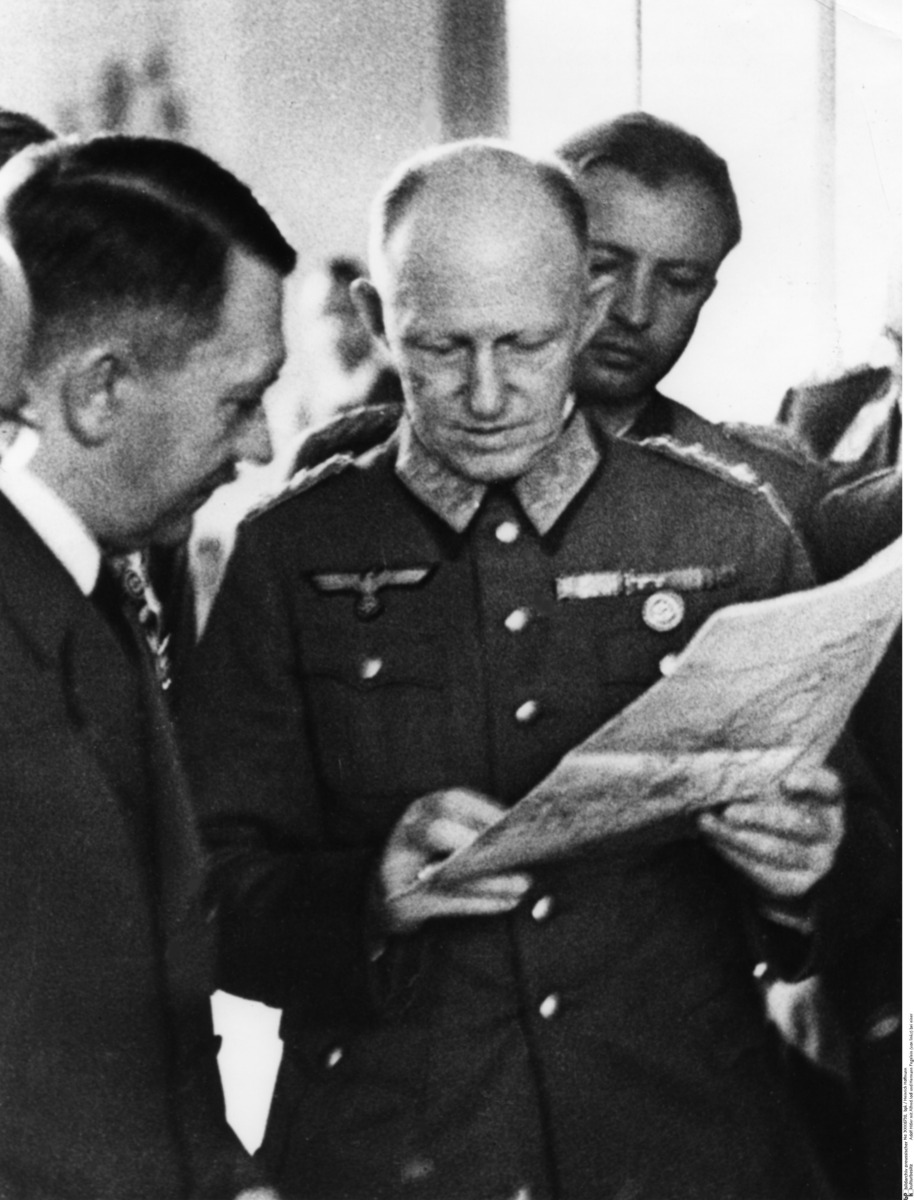Abstract
By the middle of 1944, Germany’s military situation was hopeless.
While the Red Army was marching toward the Vistula, British and American
troops began “Operation Overlord” on the Western Front. On average,
between the summer of 1944 and May 1945, 300,000 to 400,000 German
soldiers and civilians died each month, more than in all of the other
years of war put together. Hitler withdrew almost completely from public
life. His commands became increasingly irrational and detached from
reality. On April 30, 1945, he committed suicide in his bunker under the
Reich Chancellery in Berlin. In the “political testament” he dictated
shortly before his suicide, he blamed the “Jewish world conspiracy” for
the war. The photo shows, in addition to Hitler, General Alfred Jodl
(middle), the Chief of the Operations Staff of the High Command of the
Wehrmacht. As the representative of the Flensberg Government (also known
as the Donitz Government), Jodl signed the Wehrmacht’s unconditional
surrender on May 7, 1945, in the American headquarters in Reims.
